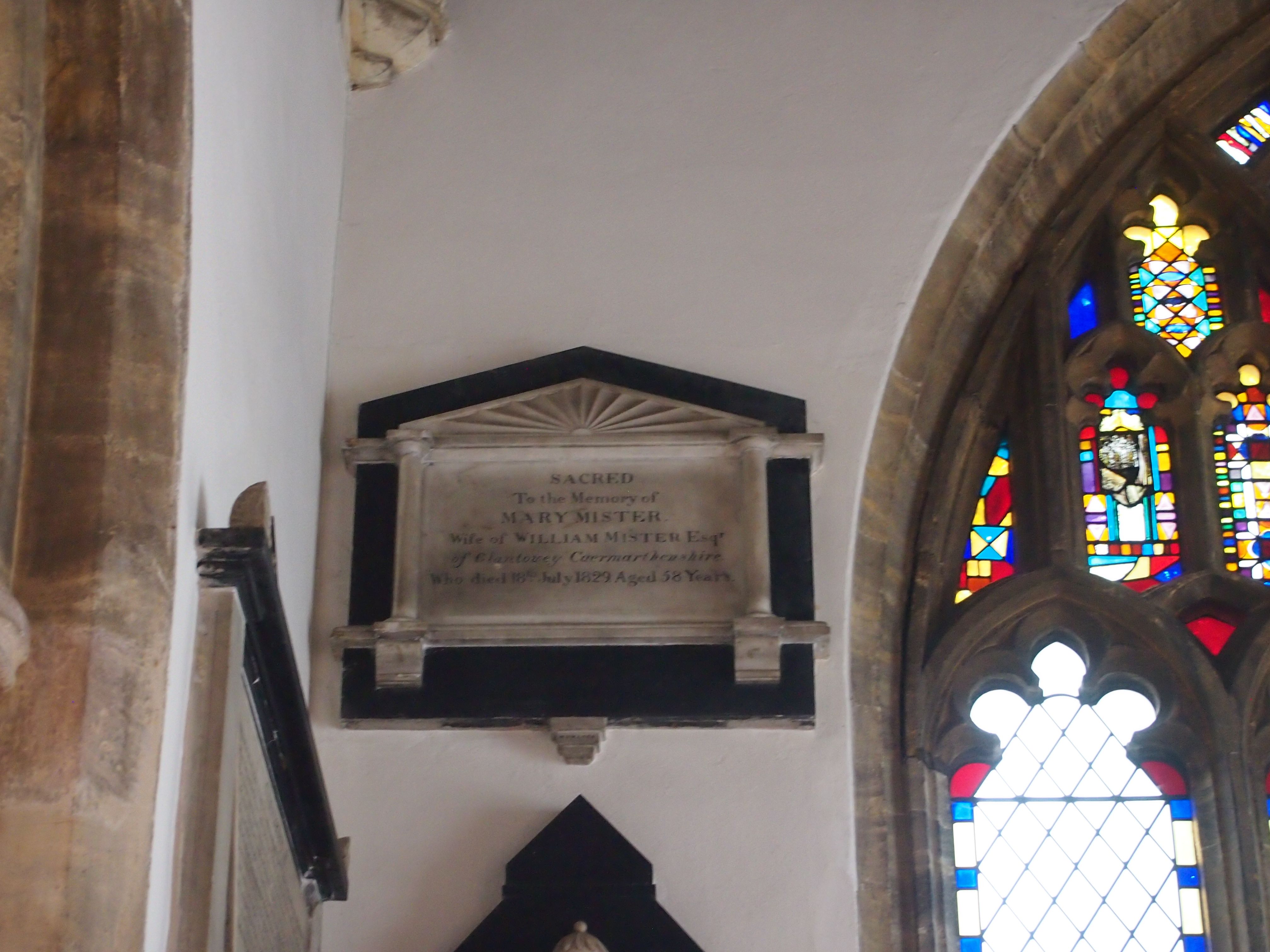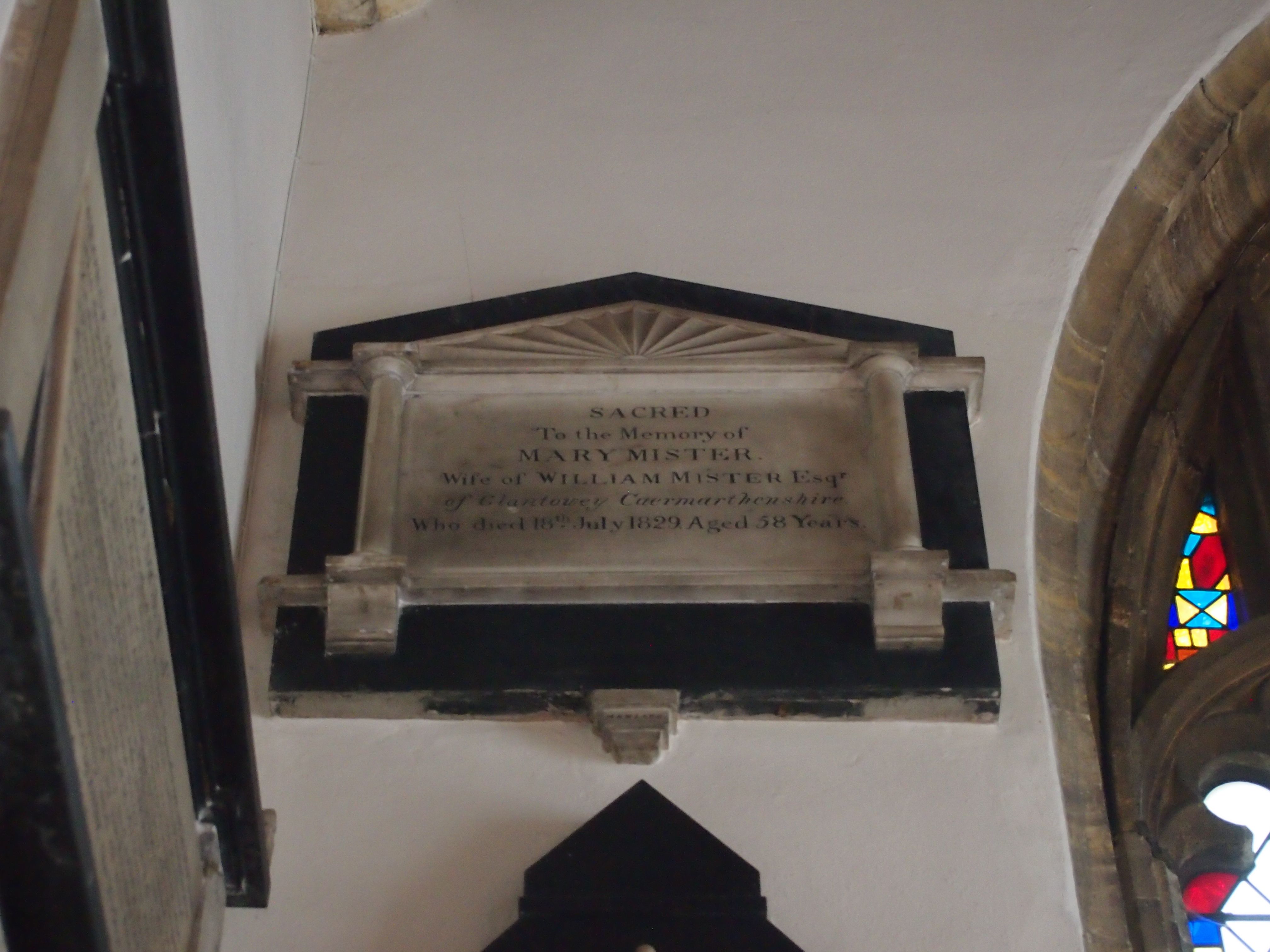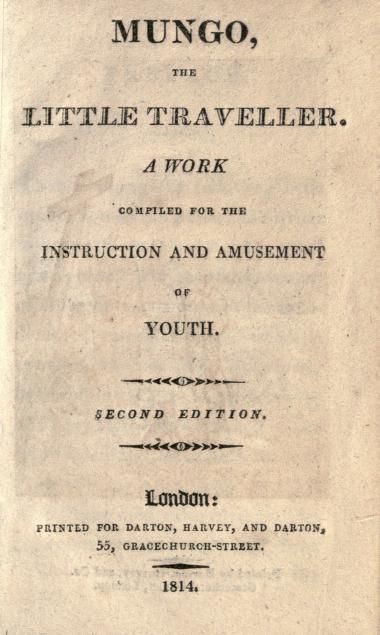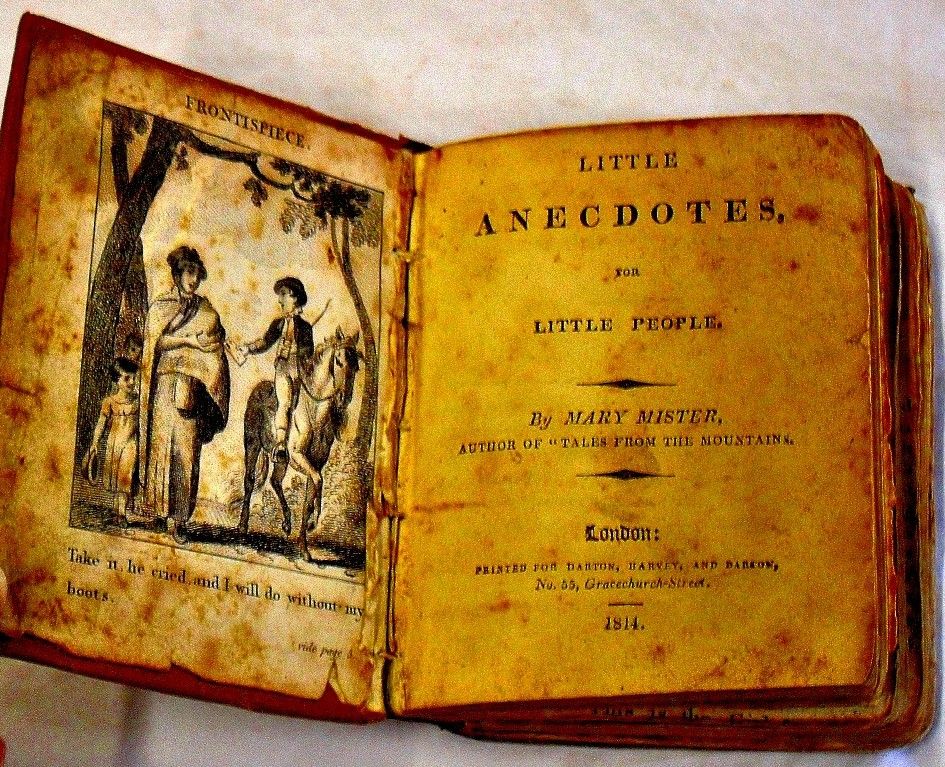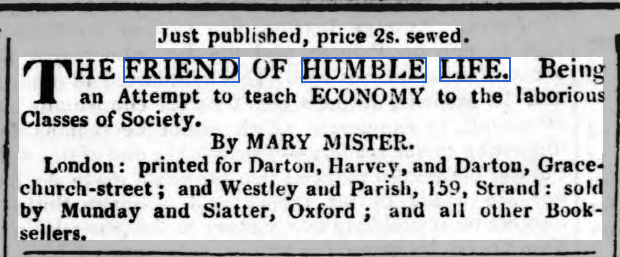Her father, an attorney in Chipping Norton, died in 1770 (age 42). In two sources, his family is said to have descended from an uncle of the great philosopher, John Locke (1632-1704), however, this has not been proven nor disproven (yet). From her later writings, we know that her childhood was not a happy one and hints at a lack of education. Her mother remarried within two years and by her death (in 1786), young Mary was living with her unmarried elder cousin, Edward Taylor, of Hill House, Steeple Aston.
Edward Taylor was the only son of the Rev. Dr. Taylor, who had been Archdeacon of Lincoln and Canon of Salisbury, by Mary, the only daughter of the Right Rev. John Thomas (1691-1877), Lord Bishop of Salisbury. Edward had been educated at Eton College, Trinity College in Cambridge and the University of Gottingen. Although he studied civil law, he never practiced. He also spent several years travelling abroad and mastered several languages (Latin, Greek, German, French and Italian) with some knowledge of Spanish and Hebrew before returning to England at about the age of 30 to settle to the life of a country gentleman in Steeple Aston. It is evident that Edward Taylor was a man of literary interests, being the author of "Cursory Remarks on Tragedy, on Shakespeare, and on Certain French and Italian Poets, Principally Tragedians". which appeared anonymously in 1774. He also published translations and was the author of unpublished poetry and a play which was presented at a theatre in 1776 at the home of Oldfield Bowles in North Aston.
Such cultural, literary and theatrical surroundings must have made a strong impression on Mary. In 1791, she published a poem in rhyming couplets, entitled "Eugenius, or, Virtue in Retirement", which depicts Edward Taylor and his love of rural peace and virtue as contrasted with a boorish fox-hunting squire.
That same year, in September, she began contributing verse, mostly sonnets, to "The Gentleman's Magazine". Roger Lonsdale, editor of the book "Eighteenth-Century Women Poets : An Oxford Anthology" (who was the first to make the connection that Mary Locke, the poet, was later, Mary Mister, the children's author) describes those sonnets as "often taking the increasingly fashionable subjectivity and melancholy to alarming extremes".
By July 1796, she had contributed twenty such poems. The series may have ended because of the ill health of her guardian. He died in December 1797, 'after a most agonizing illness', leaving Mary substantial property at Steeple Aston and Middle Barton in Oxfordshire and a considerable fortune. She wrote the inscription that is on a tablet in the church in Steeple Aston which reads, in part, "An orphan who for eleven years found an asylum beneath his hospitable roof raises this simple and sincere Memorial of gratitude to the Memory of her beloved and generous Benefactor."
On 18 July 1798 in St. Edmund's Parish Church in Shipston-on-Stour, England, Mary married William Mister, a physician and apothecary of that town. Not long after her marriage, Mary Mister sold the property that Taylor had left her, including the freehold of Hill House.
William and Mary Mister probably remained in Shipston-on-Stour until at least 1804 as that is where their two eldest children were baptized and their second child was buried. Edward Taylor Mister was christened on 6 May 1799 and Samuel Wright Mister was christened on 7 April 1800 and died in January of 1804. Their daughter, Sophia Susannah was born about 1811 and was christened at Halford in Warwickshire.
About 1810 Mary had her first known children's book published. It was entitled "Mungo, The Little Traveller; A Work Compiled For the Instruction and Amusement of Youth" and was printed for Darton, Harvey & Darton of London. The preface informs, "This little work was not intended, originally, for the public eye : it was the evening employment of a mother, for the amusement of her child; and as if fully answered that design, she flatters herself it may prove to other children not an unacceptable present." The story is an account by a dog of his travels abroad with his master. A second edition followed in 1814, another edition was published by S. And A. Davis of London in 1818 and at least 4 editions were pblished in Dublin, at least one of which is entitled, "Mungo, Or, The Little Traveller To Which is Annexed, The Seven Wonders of the World."
Later, appeared, "Tales From the Mountains, Intended For the Instruction and Amusement of Youth." To one of the stories, "The Glutton" in which greedy young James is compelled by his father to witness the hanging of a boy his own age, Mary Mister adds this postscript, 'The author is sorry to present to her young readers so gloomy a tale; but she wishes to impress on their minds, that gluttony is a disgusting vice, which often leads to the more dreadful one of robbery'.
"Little Anecdores For Little People", was first published in 1814 with other editions in 1817, 1830 and about 1840, at least one of which is believed to have been printed with the title, "Little Truths For Little People".
"The Adventures of a Doll, Compiled with the Hope of Affording Amusement and Instruction" was published in 1816. The narrator of this story is a doll, made out of wax, with a 'peculiar expression of superior understanding', and, she thinks, 'the first doll of my race, whose eyes had been taught to open and shut'. She lies unsold in her native toyshop, for she is too expensive for most pockets, until a rich, spoiled heiress buys her. So begins the doll's journey around England as she is passed from one owner to another. Among her favorite owners are a family of Quakers while her least favorite is a poor and work-shy 'gypsy' who has stolen her. Ultimately, though the doll concludes 'that neither rank nor riches exempted [the rich and titled] from partaking of the same follies and sufferings with the lowest of their fellow creatures". At last, the doll is returned to the hands of her favorite owner, a humble and kind young girl who takes her to live out her days in Wales.
"The Friend of Humble Life" was published in 1817. Its subjects are listed as "conduct of life, "social values" and "Christian life".
Mary made out her will in 1829 and describes herself as a "wife of Glantowy, Carmarthenshire" in Wales. It appears that the will was made or at least signed in Paris, France.
Mary was buried 22 July 1829 at St. Mary Magdalene Church, Taunton, Somerset, England. It is not clear why she was buried at that location.
Researched And Written By Debra (Hilmer) Jahn, Her 4th Great GrandDaughter
Her father, an attorney in Chipping Norton, died in 1770 (age 42). In two sources, his family is said to have descended from an uncle of the great philosopher, John Locke (1632-1704), however, this has not been proven nor disproven (yet). From her later writings, we know that her childhood was not a happy one and hints at a lack of education. Her mother remarried within two years and by her death (in 1786), young Mary was living with her unmarried elder cousin, Edward Taylor, of Hill House, Steeple Aston.
Edward Taylor was the only son of the Rev. Dr. Taylor, who had been Archdeacon of Lincoln and Canon of Salisbury, by Mary, the only daughter of the Right Rev. John Thomas (1691-1877), Lord Bishop of Salisbury. Edward had been educated at Eton College, Trinity College in Cambridge and the University of Gottingen. Although he studied civil law, he never practiced. He also spent several years travelling abroad and mastered several languages (Latin, Greek, German, French and Italian) with some knowledge of Spanish and Hebrew before returning to England at about the age of 30 to settle to the life of a country gentleman in Steeple Aston. It is evident that Edward Taylor was a man of literary interests, being the author of "Cursory Remarks on Tragedy, on Shakespeare, and on Certain French and Italian Poets, Principally Tragedians". which appeared anonymously in 1774. He also published translations and was the author of unpublished poetry and a play which was presented at a theatre in 1776 at the home of Oldfield Bowles in North Aston.
Such cultural, literary and theatrical surroundings must have made a strong impression on Mary. In 1791, she published a poem in rhyming couplets, entitled "Eugenius, or, Virtue in Retirement", which depicts Edward Taylor and his love of rural peace and virtue as contrasted with a boorish fox-hunting squire.
That same year, in September, she began contributing verse, mostly sonnets, to "The Gentleman's Magazine". Roger Lonsdale, editor of the book "Eighteenth-Century Women Poets : An Oxford Anthology" (who was the first to make the connection that Mary Locke, the poet, was later, Mary Mister, the children's author) describes those sonnets as "often taking the increasingly fashionable subjectivity and melancholy to alarming extremes".
By July 1796, she had contributed twenty such poems. The series may have ended because of the ill health of her guardian. He died in December 1797, 'after a most agonizing illness', leaving Mary substantial property at Steeple Aston and Middle Barton in Oxfordshire and a considerable fortune. She wrote the inscription that is on a tablet in the church in Steeple Aston which reads, in part, "An orphan who for eleven years found an asylum beneath his hospitable roof raises this simple and sincere Memorial of gratitude to the Memory of her beloved and generous Benefactor."
On 18 July 1798 in St. Edmund's Parish Church in Shipston-on-Stour, England, Mary married William Mister, a physician and apothecary of that town. Not long after her marriage, Mary Mister sold the property that Taylor had left her, including the freehold of Hill House.
William and Mary Mister probably remained in Shipston-on-Stour until at least 1804 as that is where their two eldest children were baptized and their second child was buried. Edward Taylor Mister was christened on 6 May 1799 and Samuel Wright Mister was christened on 7 April 1800 and died in January of 1804. Their daughter, Sophia Susannah was born about 1811 and was christened at Halford in Warwickshire.
About 1810 Mary had her first known children's book published. It was entitled "Mungo, The Little Traveller; A Work Compiled For the Instruction and Amusement of Youth" and was printed for Darton, Harvey & Darton of London. The preface informs, "This little work was not intended, originally, for the public eye : it was the evening employment of a mother, for the amusement of her child; and as if fully answered that design, she flatters herself it may prove to other children not an unacceptable present." The story is an account by a dog of his travels abroad with his master. A second edition followed in 1814, another edition was published by S. And A. Davis of London in 1818 and at least 4 editions were pblished in Dublin, at least one of which is entitled, "Mungo, Or, The Little Traveller To Which is Annexed, The Seven Wonders of the World."
Later, appeared, "Tales From the Mountains, Intended For the Instruction and Amusement of Youth." To one of the stories, "The Glutton" in which greedy young James is compelled by his father to witness the hanging of a boy his own age, Mary Mister adds this postscript, 'The author is sorry to present to her young readers so gloomy a tale; but she wishes to impress on their minds, that gluttony is a disgusting vice, which often leads to the more dreadful one of robbery'.
"Little Anecdores For Little People", was first published in 1814 with other editions in 1817, 1830 and about 1840, at least one of which is believed to have been printed with the title, "Little Truths For Little People".
"The Adventures of a Doll, Compiled with the Hope of Affording Amusement and Instruction" was published in 1816. The narrator of this story is a doll, made out of wax, with a 'peculiar expression of superior understanding', and, she thinks, 'the first doll of my race, whose eyes had been taught to open and shut'. She lies unsold in her native toyshop, for she is too expensive for most pockets, until a rich, spoiled heiress buys her. So begins the doll's journey around England as she is passed from one owner to another. Among her favorite owners are a family of Quakers while her least favorite is a poor and work-shy 'gypsy' who has stolen her. Ultimately, though the doll concludes 'that neither rank nor riches exempted [the rich and titled] from partaking of the same follies and sufferings with the lowest of their fellow creatures". At last, the doll is returned to the hands of her favorite owner, a humble and kind young girl who takes her to live out her days in Wales.
"The Friend of Humble Life" was published in 1817. Its subjects are listed as "conduct of life, "social values" and "Christian life".
Mary made out her will in 1829 and describes herself as a "wife of Glantowy, Carmarthenshire" in Wales. It appears that the will was made or at least signed in Paris, France.
Mary was buried 22 July 1829 at St. Mary Magdalene Church, Taunton, Somerset, England. It is not clear why she was buried at that location.
Researched And Written By Debra (Hilmer) Jahn, Her 4th Great GrandDaughter
Inscription
'Sacred to the Memory of Mary Mister, wife of William Mister Esqr of Glantowey, Caermarthenshire, who died 18 July 1829 aged 58 years.'
Family Members
Advertisement
Advertisement





